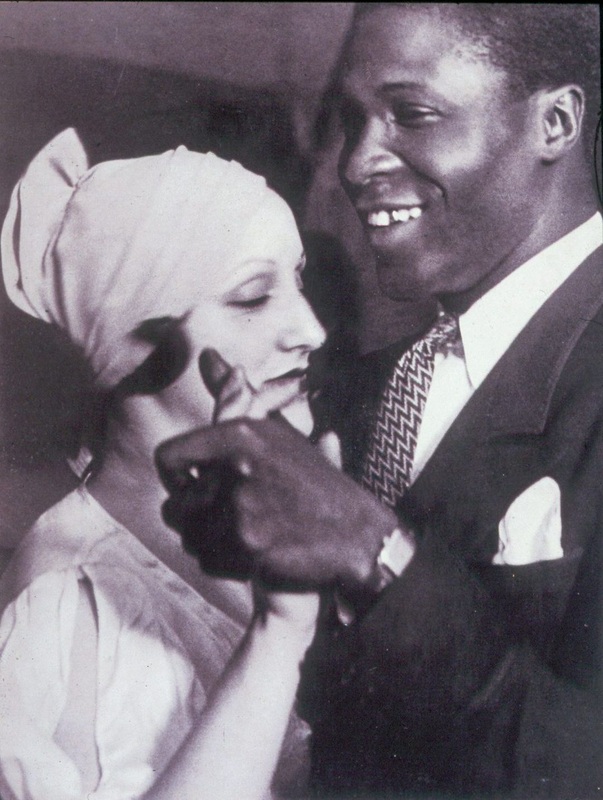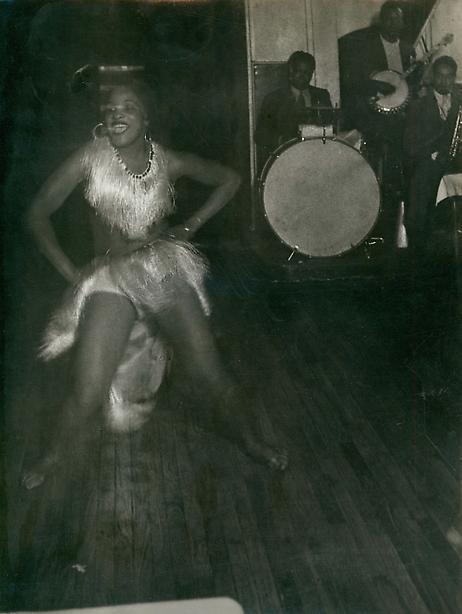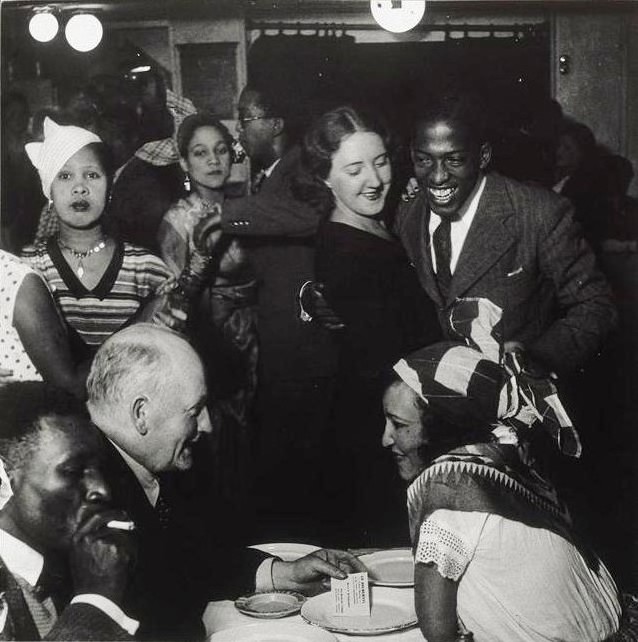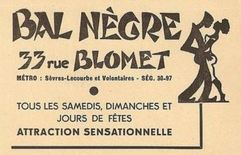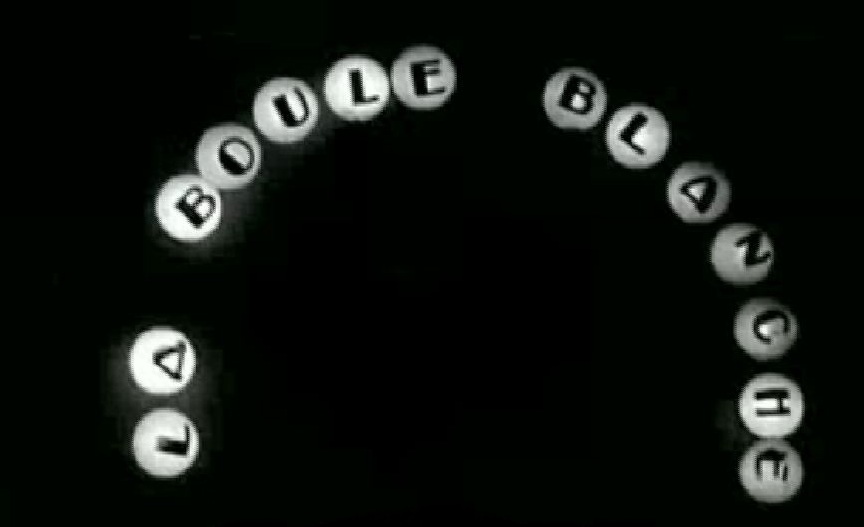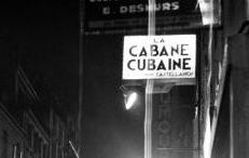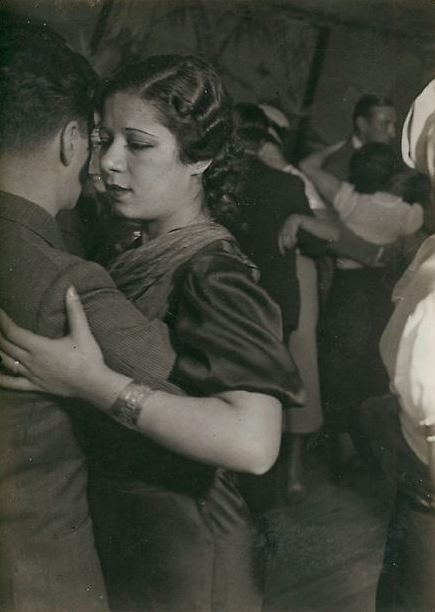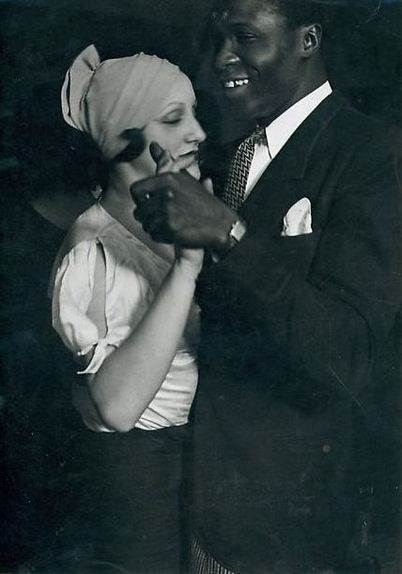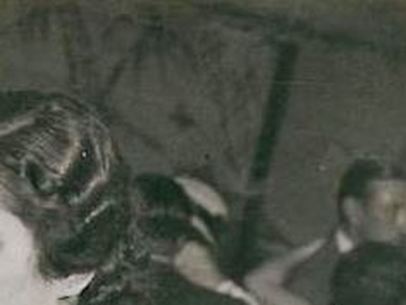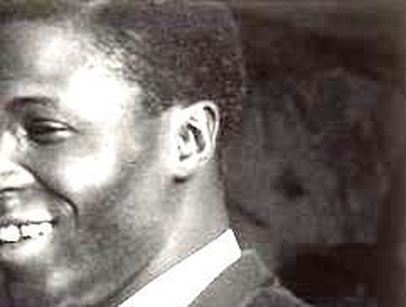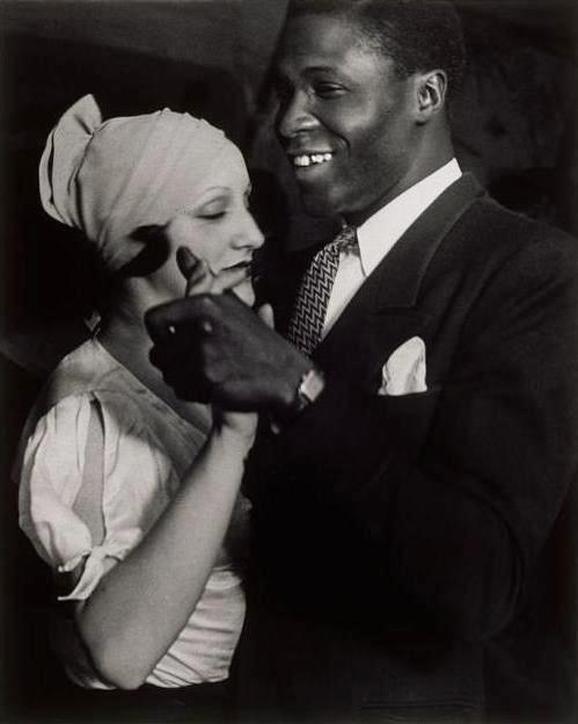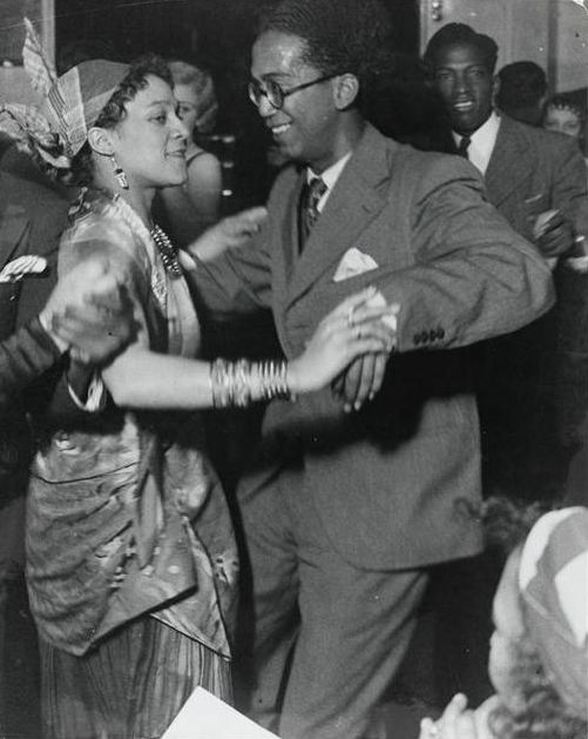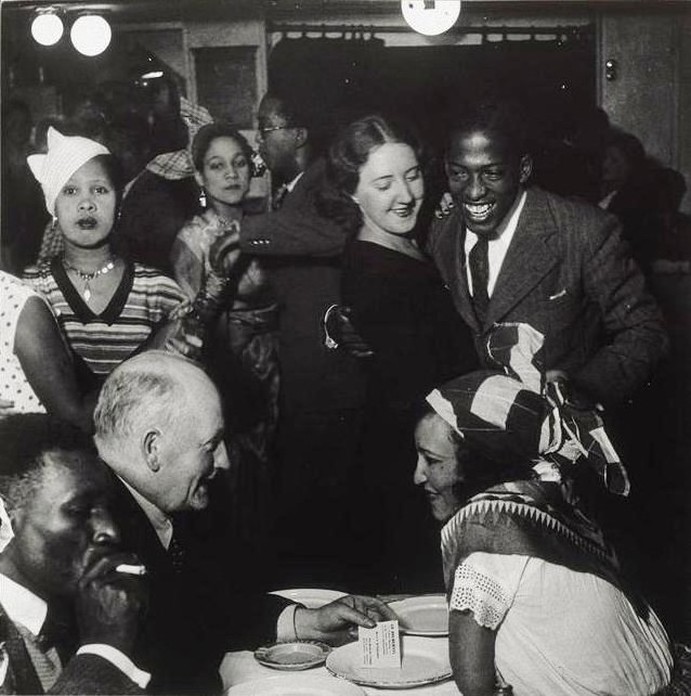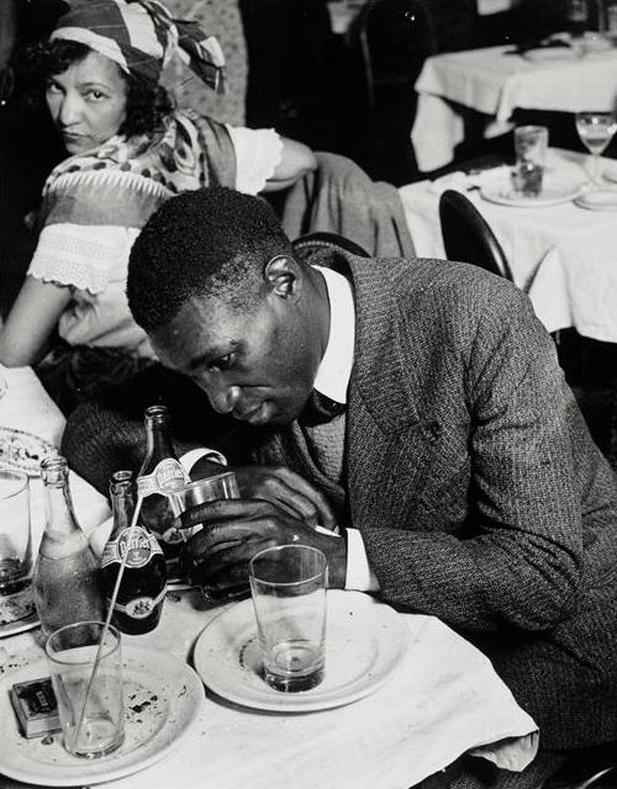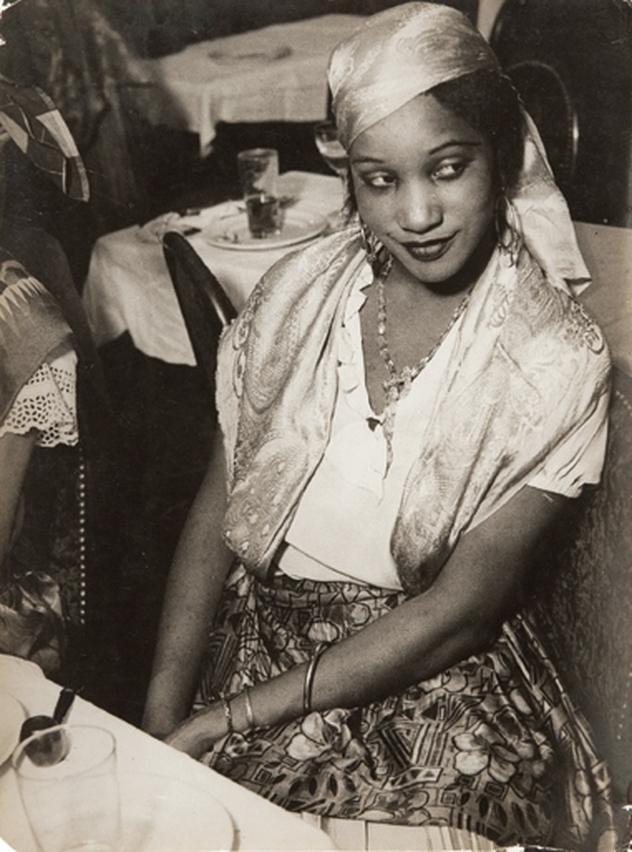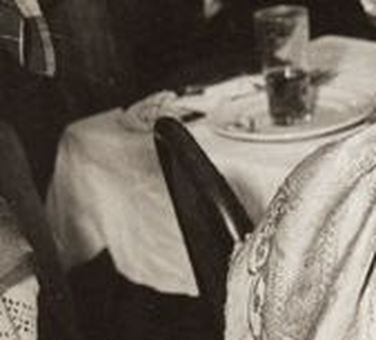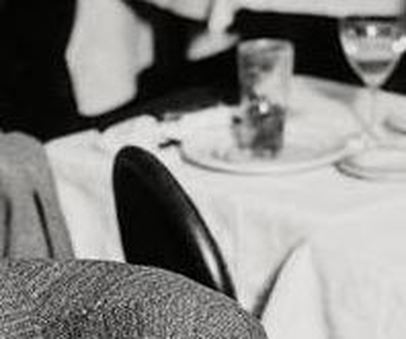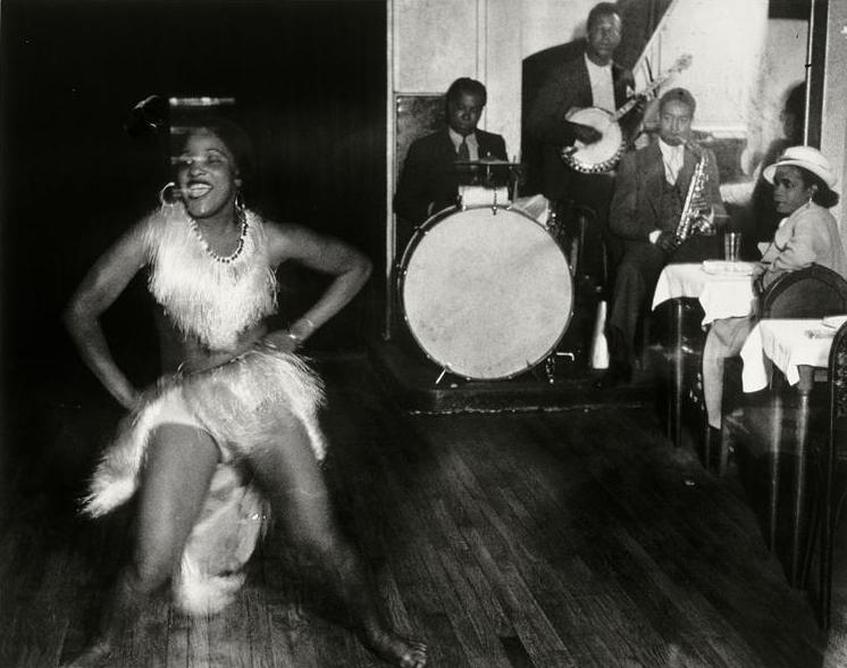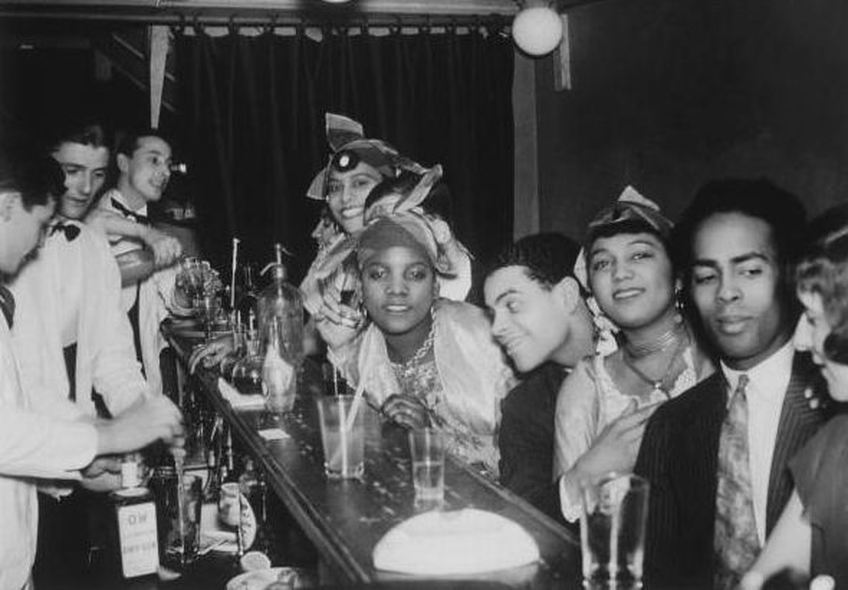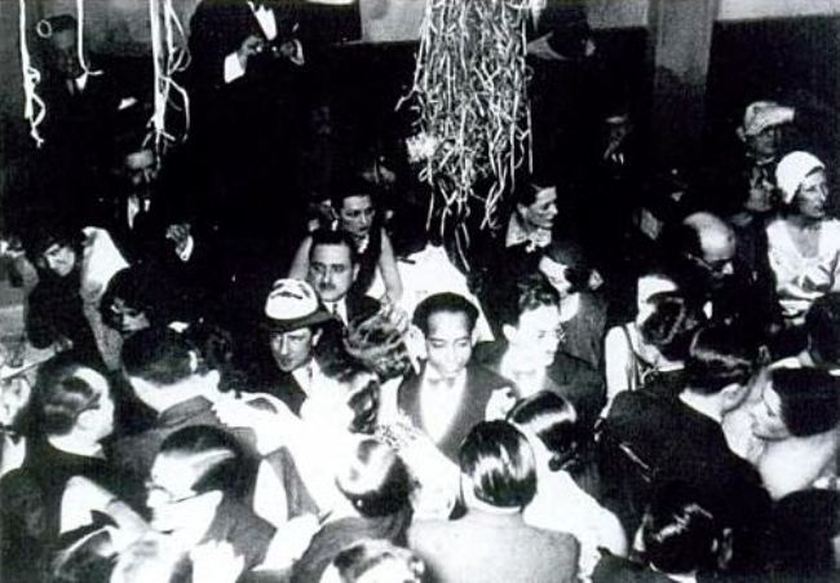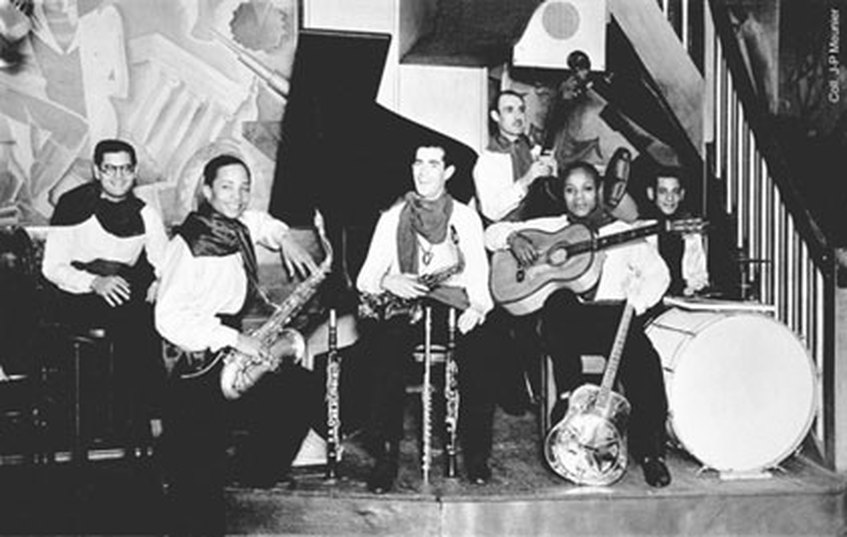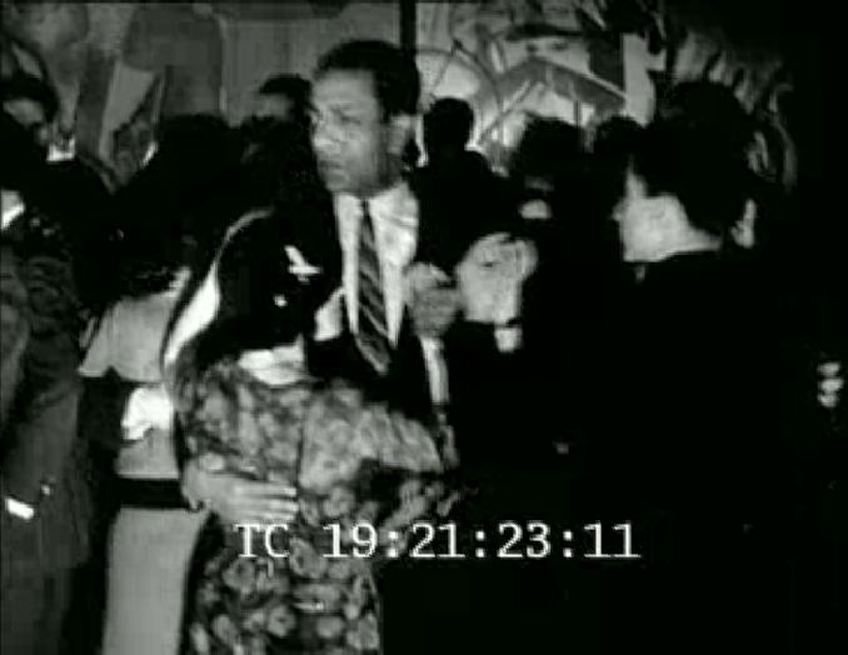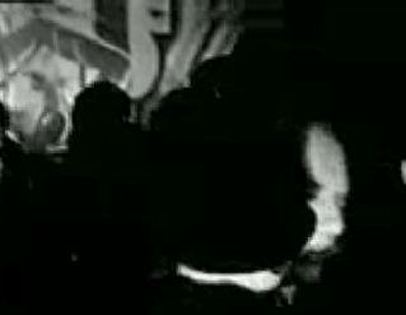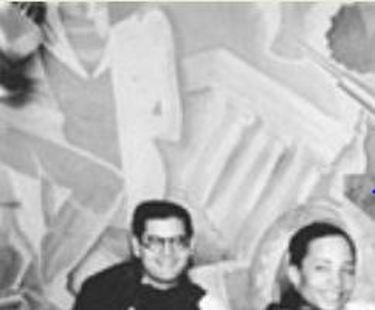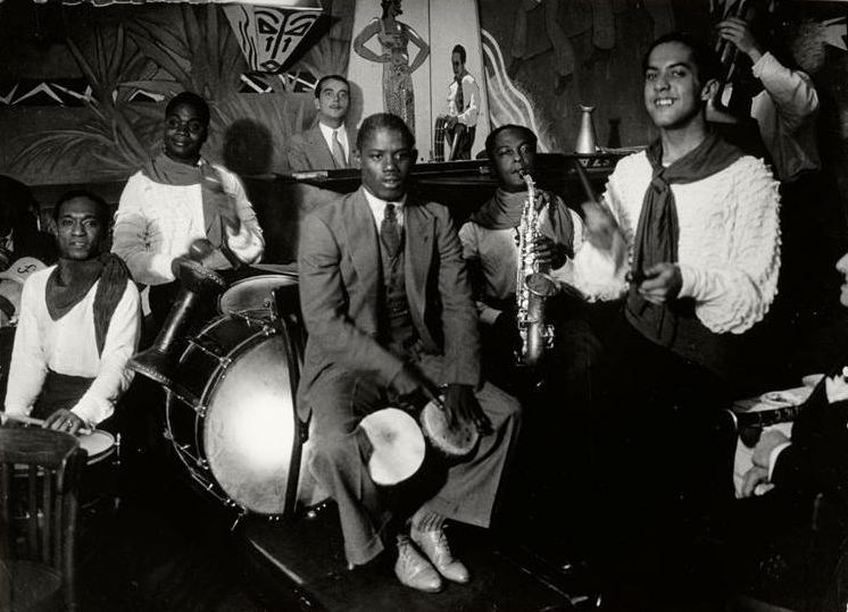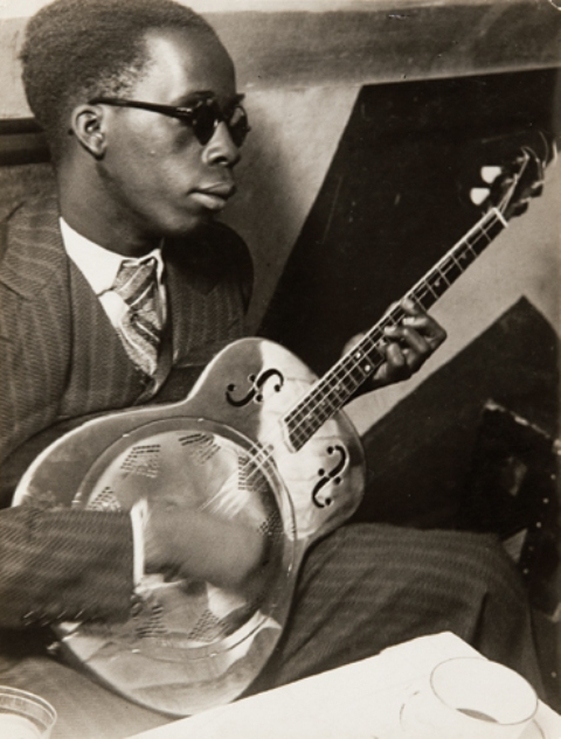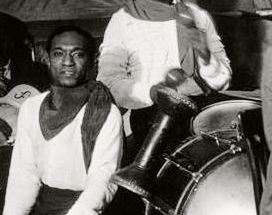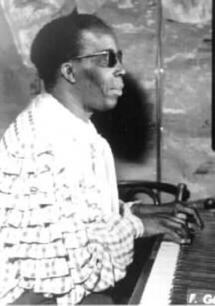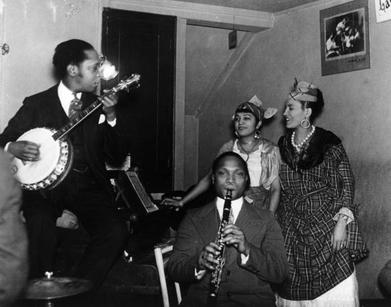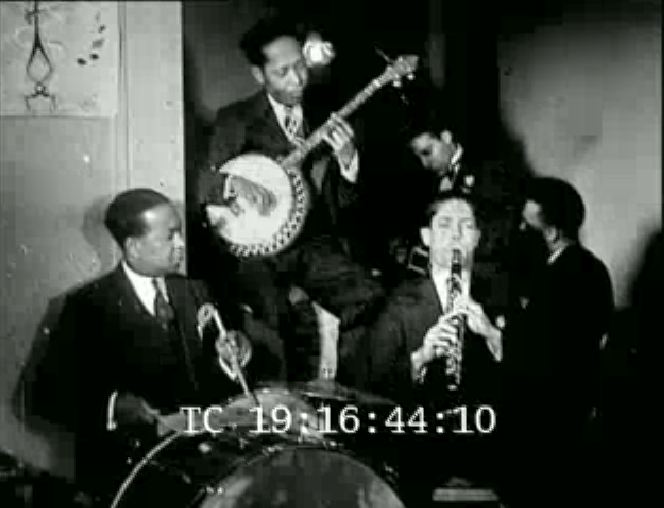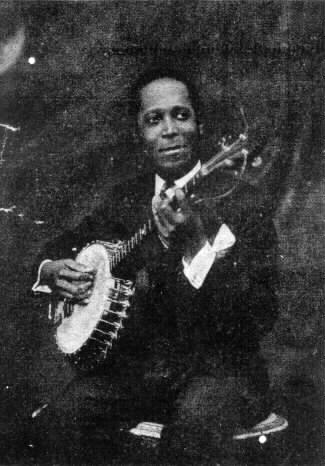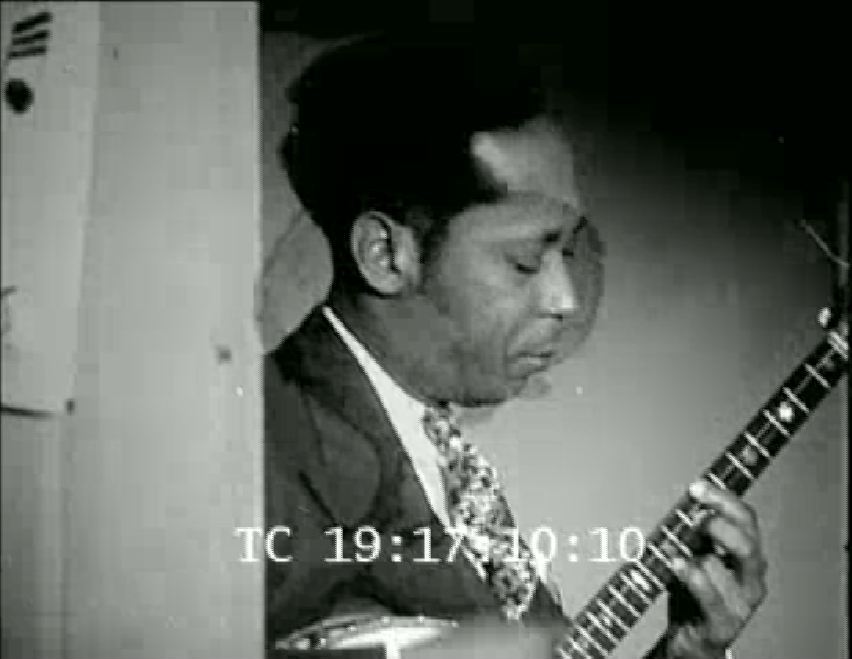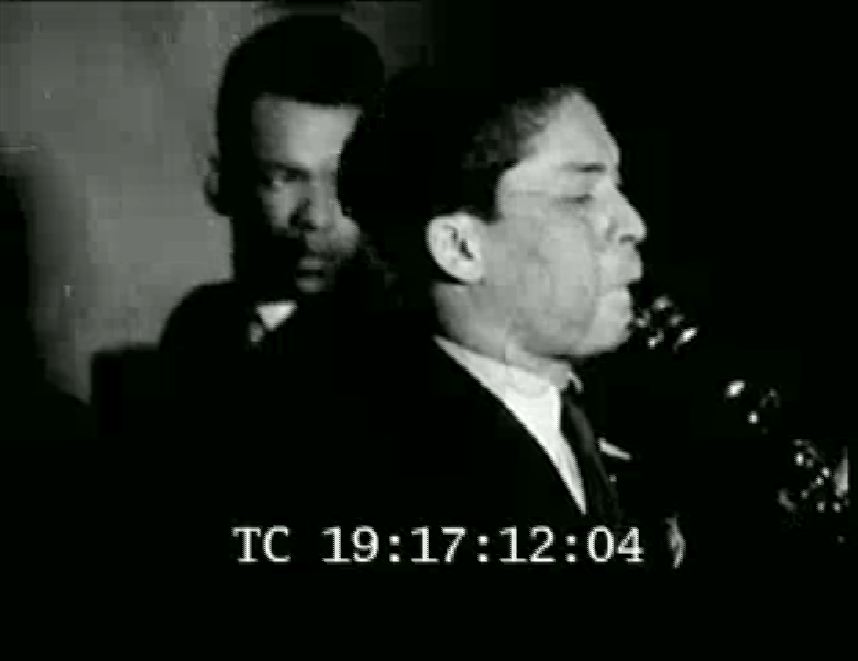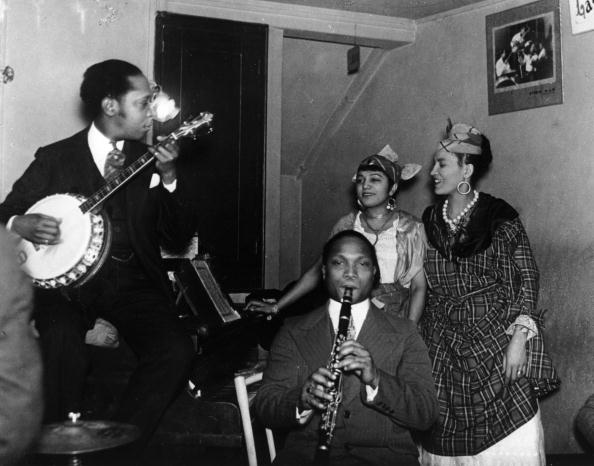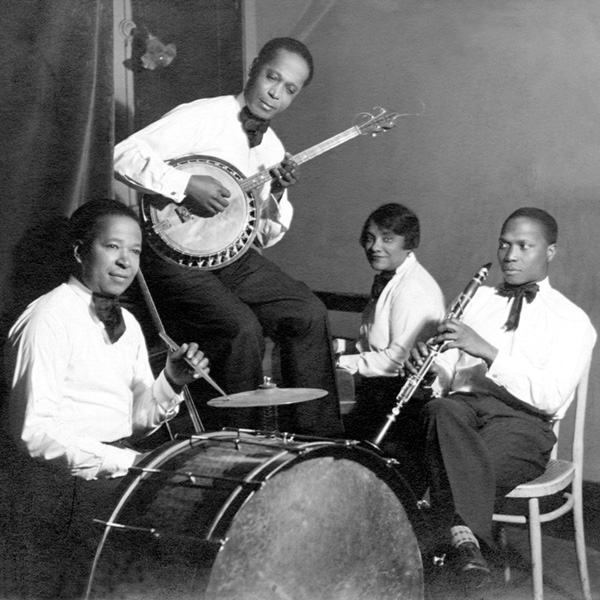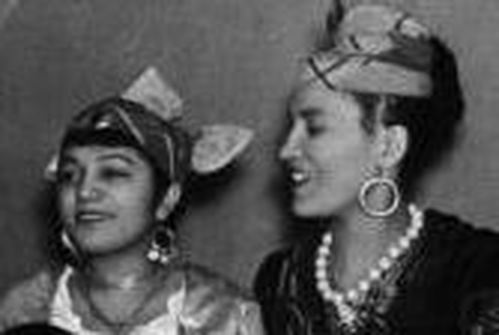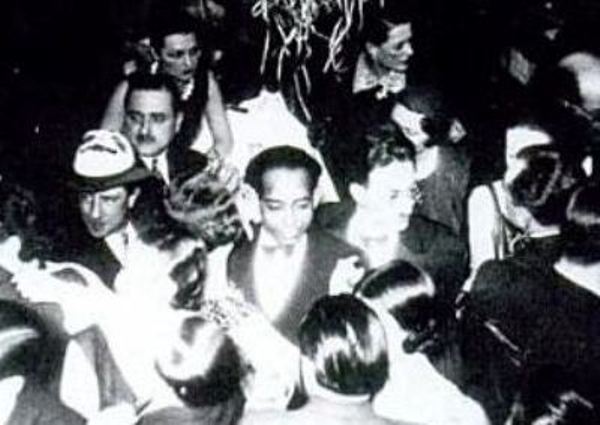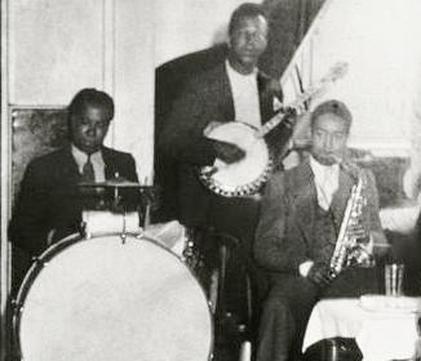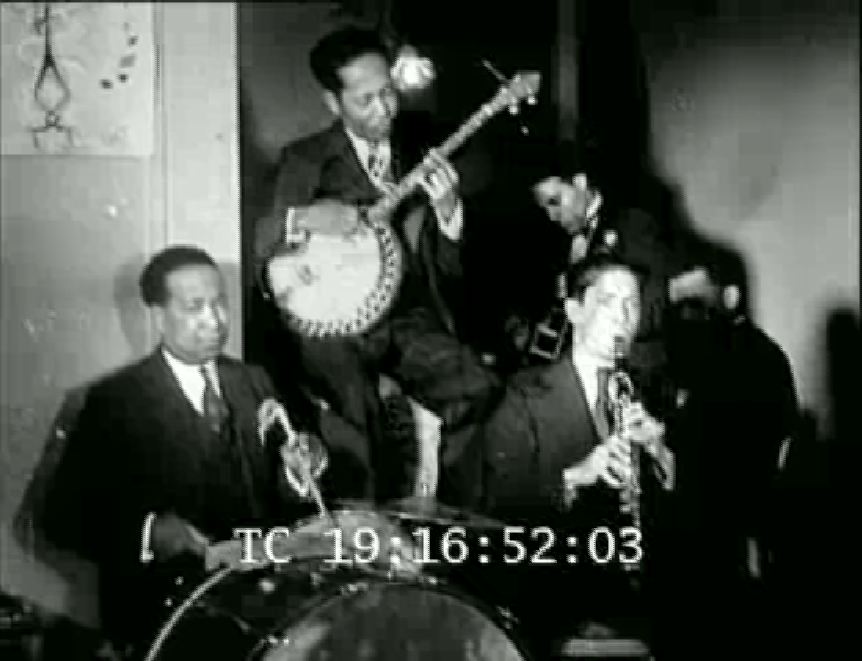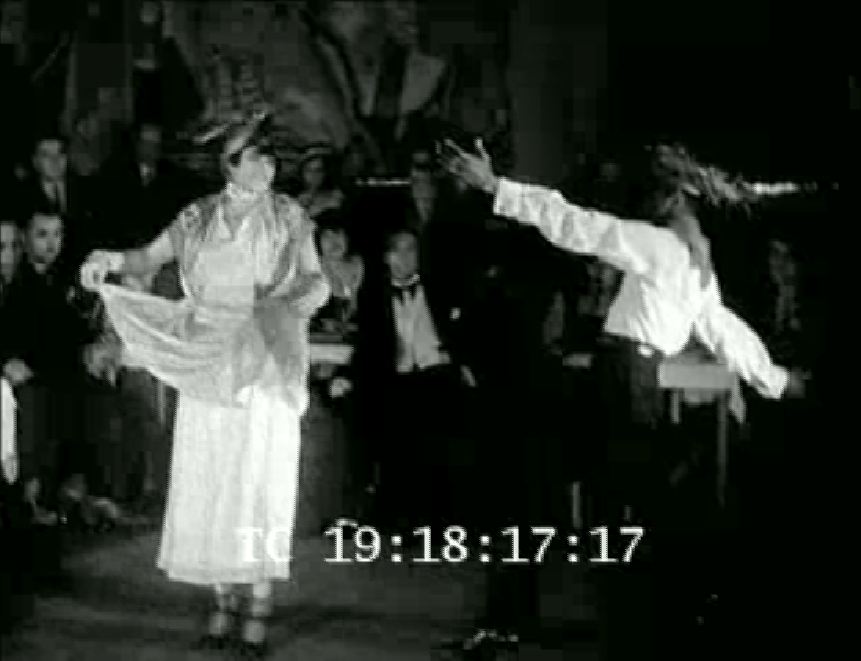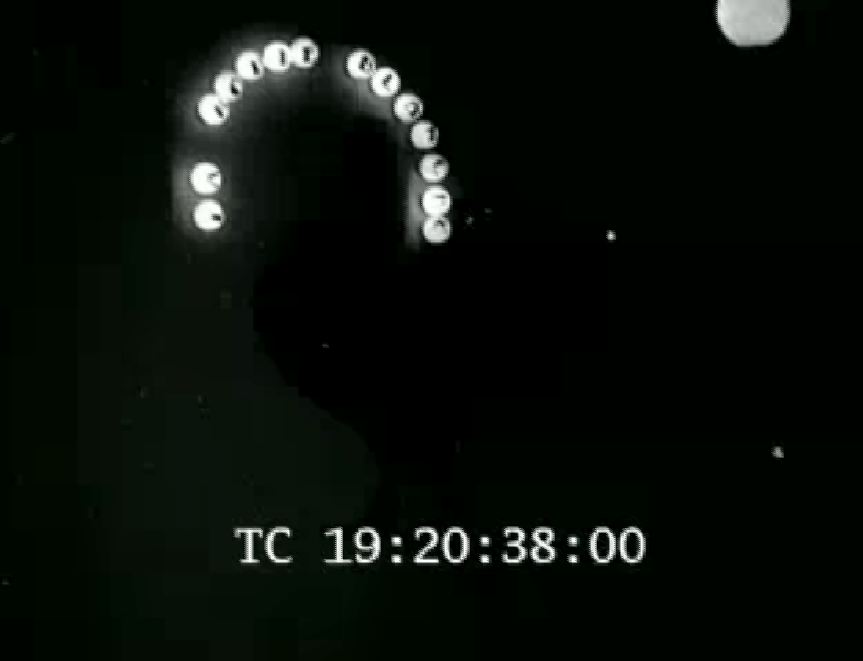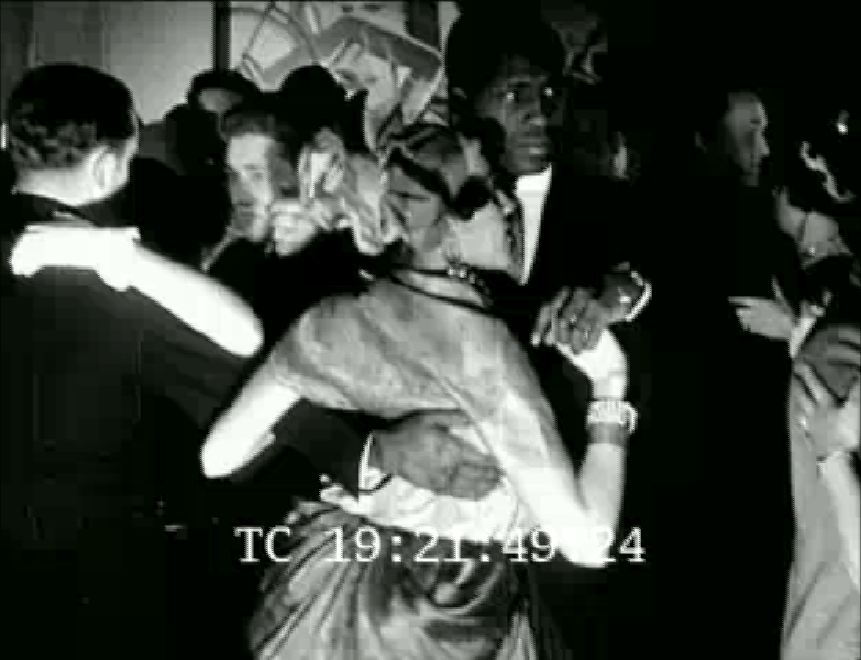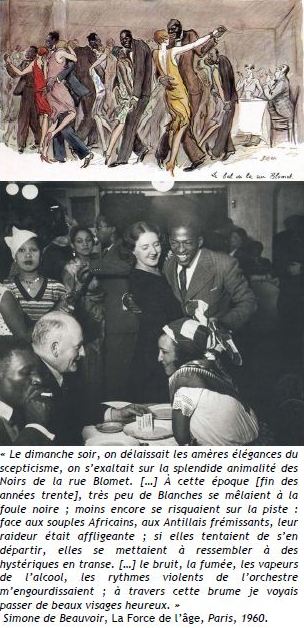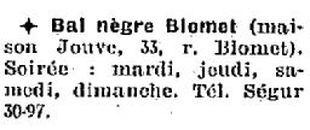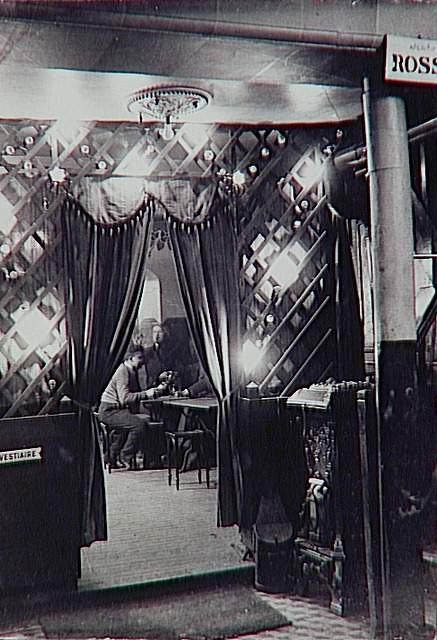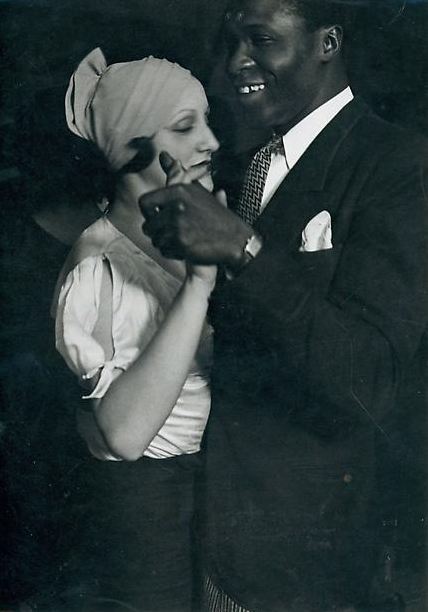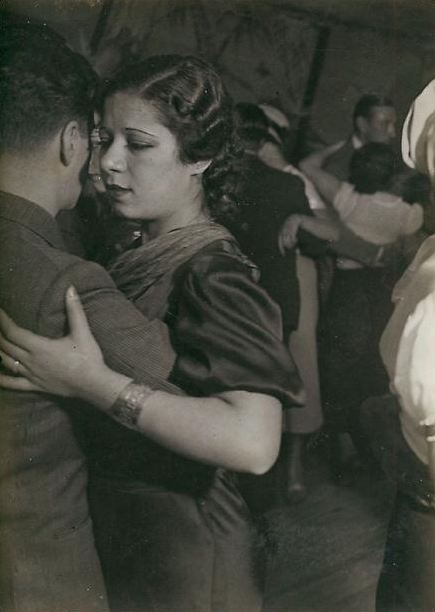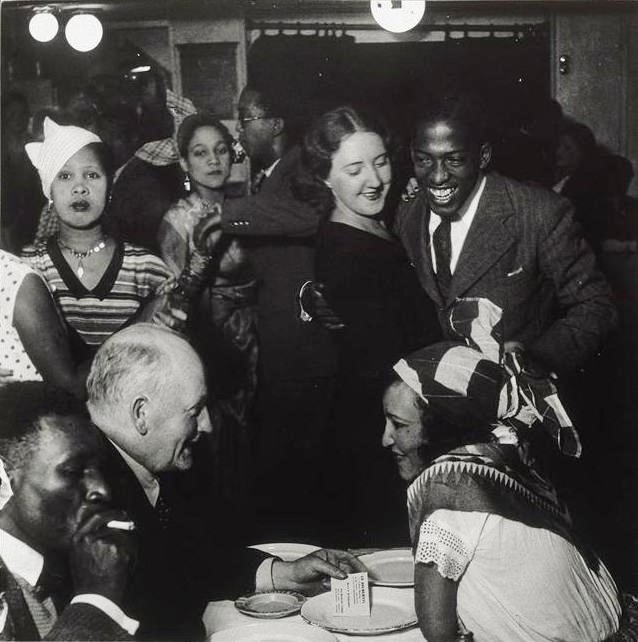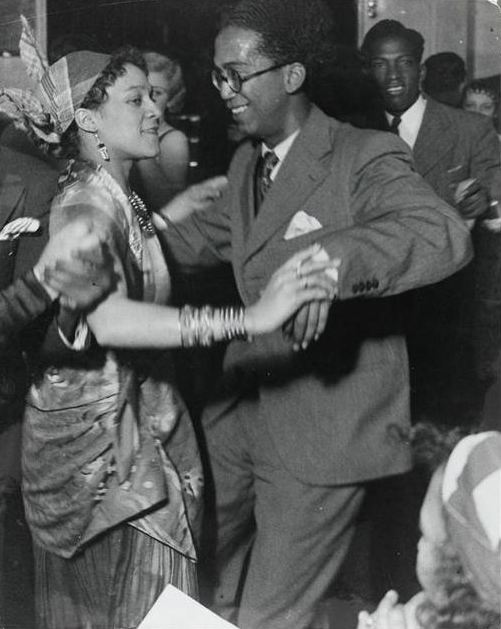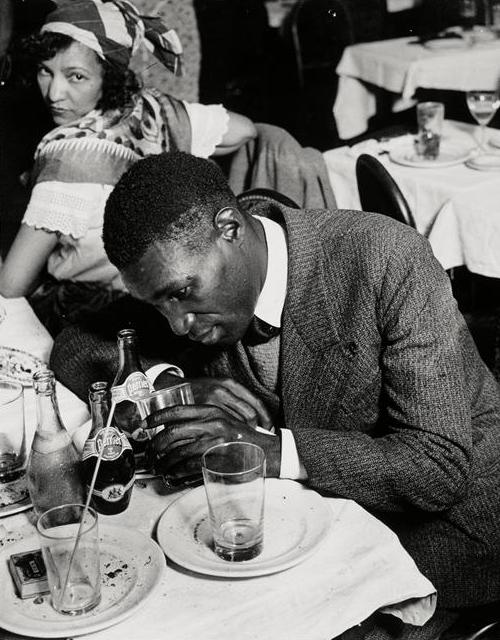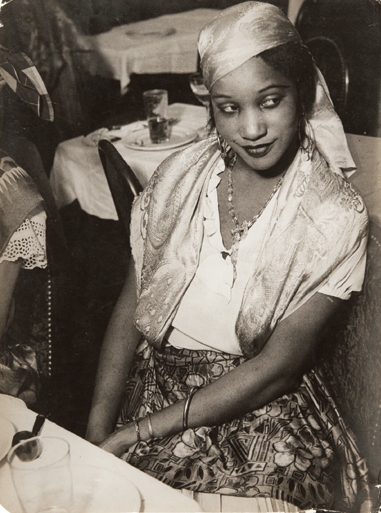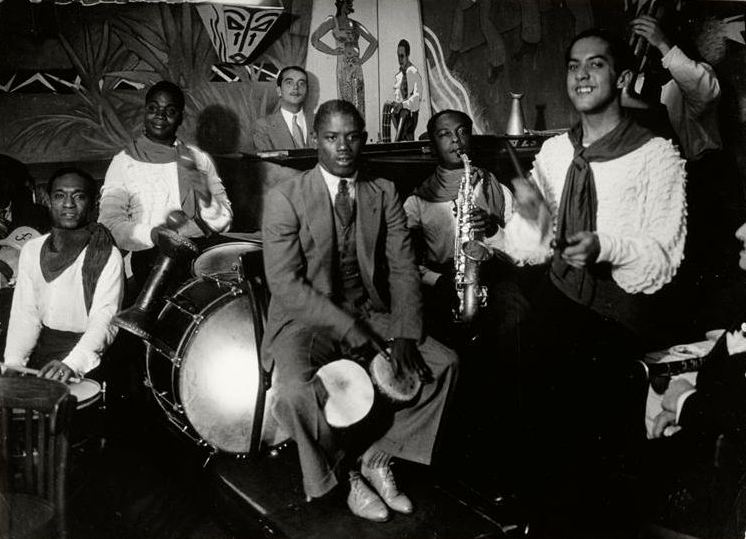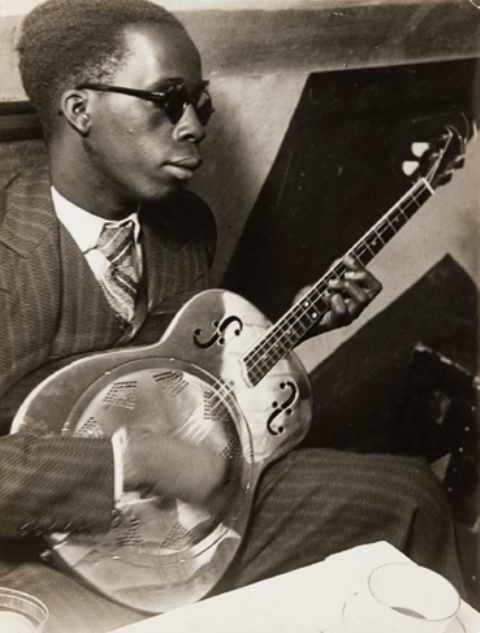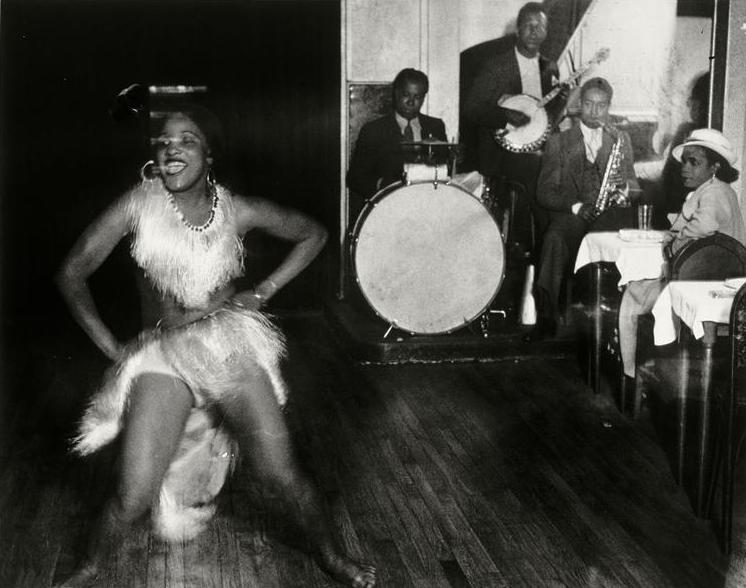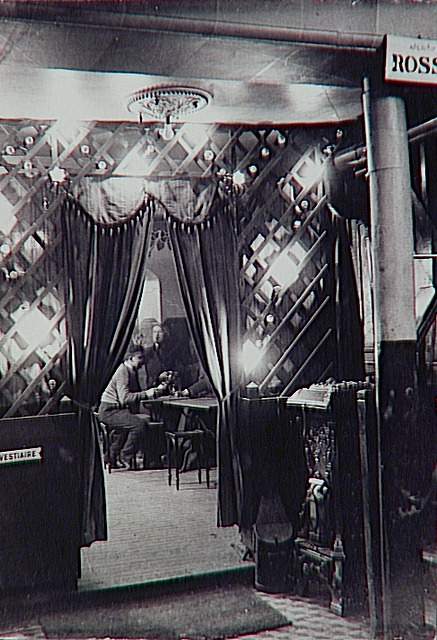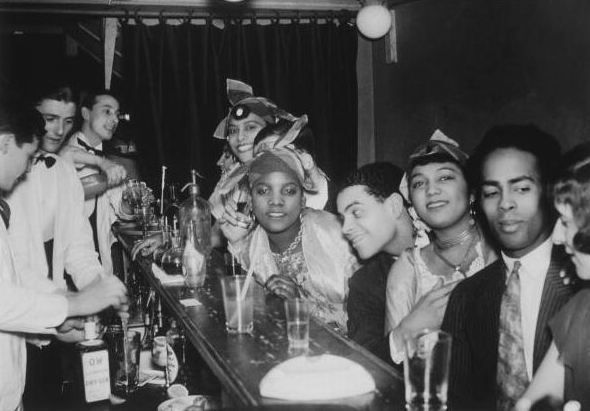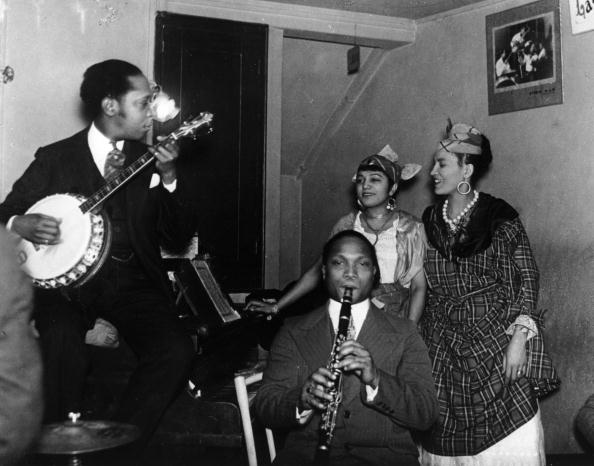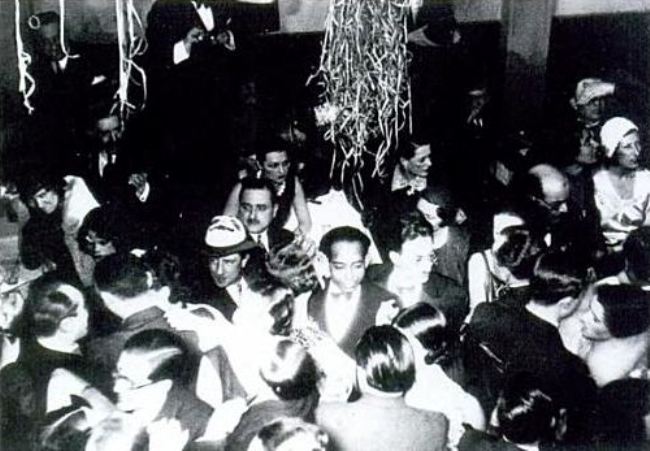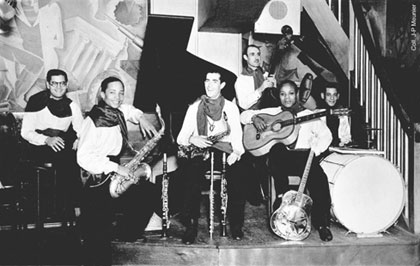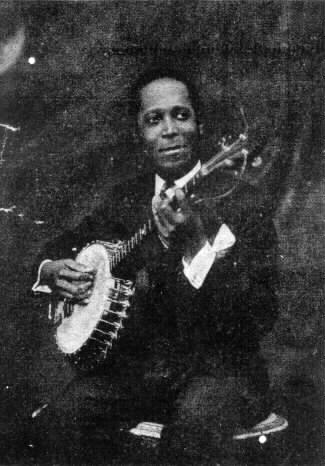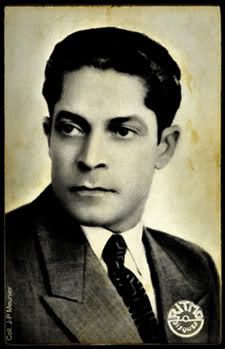10 photographs by Brassaï in 3 Paris dancehalls c.1932
(This is a revised version of my post of 26-08-2012, following information and clarifications provided by Antillean music expert Jean-Pierre Meunier, to whom I am most grateful.)
(This is a revised version of my post of 26-08-2012, following information and clarifications provided by Antillean music expert Jean-Pierre Meunier, to whom I am most grateful.)
In his 1976 book Le Paris secret des années 30, Brassaï distills his experience of frequenting Paris's Antillean dancehalls into these three photographs, under the heading 'The Bal Nègre in the rue Blomet'. According to the index of photographs in the book, only the first of these is taken at the Bal Nègre, c.1932; the other two are identified as taken at the Boule Blanche, c.1931, and the Cabane Cubaine, c.1932.
As the card above shows (though I think it actually dates from the 1950s), the Bal Nègre (or Bal Blomet, or Bal Colonial) was at 33 rue Blomet, in the 15e arrondissement, a few houses from where Robert Desnos lived. The Boule Blanche was at 33 rue Vavin, 6e. Some distance from these two Montparnasse dancehalls was the Cabane Cubaine in Pigalle, at 42 rue Fontaine, 9e (this was also André Breton's address).
Brassaï gives a short account of how some people engaged with such places:
'After the First World War, along with the Charleston, the beguine and the shimmy, Parisians – particularly Parisian women – discovered Le Bal Nègre in the rue Blomet. As though the carnage of the war had inspired a sudden sexual frenzy, white women – drunk on their own bodies and forgetting that contact with a Negro had once been shocking, were irresistibly drawn to the XVth arrondissement [the English translation wrongly puts 'Vth'], the Harlem of Paris. Every evening, luxurious automobiles unloaded hordes of elegant society neurotics, all of them avid to throw themselves – quite literally – into the arms of handsome, athletic Senegalese, Antillan, Guinean, or Sudanese men.
A kind of hysterical sorcery permeated this night club, which throbbed to the beat of syncopated music: shoulders shook, breasts quivered, hips undulated. It was like some voodoo rite. Glued together, belly to belly, breast to breast, the couples gyrated and pulsed as though they were naked together in bed.
The passion for Negroes reached its peak around 1925, with the arrival in France of the American Negro Dance Company and the resounding success of Josephine Baker.
Taking advantage of the craze, other Negro night clubs soon opened in Montparnasse and Montmartre, the Boule Blanche, the Cabane Cubaine, and many more. The whites gradually grew disenchanted with the Bal Negre in the Rue Blomet.'
Brassaï gives a short account of how some people engaged with such places:
'After the First World War, along with the Charleston, the beguine and the shimmy, Parisians – particularly Parisian women – discovered Le Bal Nègre in the rue Blomet. As though the carnage of the war had inspired a sudden sexual frenzy, white women – drunk on their own bodies and forgetting that contact with a Negro had once been shocking, were irresistibly drawn to the XVth arrondissement [the English translation wrongly puts 'Vth'], the Harlem of Paris. Every evening, luxurious automobiles unloaded hordes of elegant society neurotics, all of them avid to throw themselves – quite literally – into the arms of handsome, athletic Senegalese, Antillan, Guinean, or Sudanese men.
A kind of hysterical sorcery permeated this night club, which throbbed to the beat of syncopated music: shoulders shook, breasts quivered, hips undulated. It was like some voodoo rite. Glued together, belly to belly, breast to breast, the couples gyrated and pulsed as though they were naked together in bed.
The passion for Negroes reached its peak around 1925, with the arrival in France of the American Negro Dance Company and the resounding success of Josephine Baker.
Taking advantage of the craze, other Negro night clubs soon opened in Montparnasse and Montmartre, the Boule Blanche, the Cabane Cubaine, and many more. The whites gradually grew disenchanted with the Bal Negre in the Rue Blomet.'
Other photographs taken by Brassaï in these places have surfaced - on auction sites and in image libraries. Some can be matched with those that Brassaï published, as here, below, where the headgear and blouse of the woman in the image right can be seen in the image left, suggesting that the two photographs were taken on the same night (indeed within the same few seconds):
For confirmation that this is the same place, lightening the image right shows a detail of the decor that corresponds to a detail of the decor in the image left:
Brassaï gives 1932 as the date of this shoot, whereas the New York gallery that exhibited the image left dated it as 1935. In this case 1932 seems the more likely.
A more controversial reading of the photograph in Brassaï's book relates to the woman. It is tempting to read her as illustrating his description of white women in possession of a sexual frenzy, drunk on their own bodies, literally throwing themselves into the arms of athletic black men, but clearly she does not fit that description, appearing neither frenetic or intoxicated . It is not clear, moreover, that she is a white woman at all. The lightness of her skin is not conclusive evidence as to her identity, nor is the way she is dressed, but she has been regularly read as white, and the photograph has been used to illustrate interracial relations in this kind of locale. I'm not saying I know she isn't white, simply that I don't believe you can know that she is.
A more controversial reading of the photograph in Brassaï's book relates to the woman. It is tempting to read her as illustrating his description of white women in possession of a sexual frenzy, drunk on their own bodies, literally throwing themselves into the arms of athletic black men, but clearly she does not fit that description, appearing neither frenetic or intoxicated . It is not clear, moreover, that she is a white woman at all. The lightness of her skin is not conclusive evidence as to her identity, nor is the way she is dressed, but she has been regularly read as white, and the photograph has been used to illustrate interracial relations in this kind of locale. I'm not saying I know she isn't white, simply that I don't believe you can know that she is.
Another photograph that can be matched to one in Brassaï's book is this, which can be found on the website of the Agence photographique, Réunion des musées nationaux (hereinafter RMN), where it is described as 'Danseurs à la "Cabane Cubaine", 1931':
The couple dancing in this picture are also dancing in the middle ground of the picture below. The man towards the back, above, has come forward with his partner to look smilingly at the seated couple, the woman of which, with the striped headwrap, can be seen in the bottom right-hand corner of the picture above.
Brassaï locates the above photograph at the Cabane Cubaine and dates it 1932, as does the RMN, though the Agence dated the previous photograph 1931, when the two are clearly taken on the same evening. Jean-Pierre Meunier confirms that this is definitely the Cabane Cubaine, specifying that the woman in black is the club's owner Aurélie Orus.
The woman with the striped headwrap can also be seen in the picture below, looking at the camera or at the man smoking a cigarette in the bottom left corner of the picture above, though now he is examining the contents of his glass:
The woman with the striped headwrap can also be seen in the picture below, looking at the camera or at the man smoking a cigarette in the bottom left corner of the picture above, though now he is examining the contents of his glass:
At the RMN this photograph is simply called
'Homme ivre (Perrier), 1931', without a location. We can match it to the photographs from the Cabane Cubaine, and adjust the date to c.1932.
Below is another photograph taken this same night in this same place. Here we can see to the left the blouse, scarf and headwrap of the seated woman in the three pictures above:
Below is another photograph taken this same night in this same place. Here we can see to the left the blouse, scarf and headwrap of the seated woman in the three pictures above:
We can also match a chair and a half empty glass on a plate, if we are still not sure:
With this last of four photographs taken on the same evening, a problem arises regarding where exactly they were taken. A signed print of the photograph was sold at auction in 2008, originating from the private collection of Brassaï's widow, titled and dated as 'Gisèle de la Boule Blanche c.1932-33'. We might infer that this means the photograph was taken at the Boule Blanche and not, as the attributions of the matching photographs would indicate, at the Cabane Cubaine. The inference could be wrong, of course, since the title given the photograph (by Brassaï or by his widow Gilberte) says 'Gisèle de la Boule Blanche', not 'à la Boule Blanche'.
Gisèle was a dancer at the Boule Blanche, as one of the three photographs in Le Paris secret des années 30 makes clear, but in the photograph above she could be spending her evening off across town at the Cabane Cubaine.
We have a photograph of Gisèle at work. Below is the photograph Brassaï calls 'Gisèle performing at The Boule Blanche in Montparnasse (c. 1931)' (dated 1932 by the RMN, incidentally):
We have a photograph of Gisèle at work. Below is the photograph Brassaï calls 'Gisèle performing at The Boule Blanche in Montparnasse (c. 1931)' (dated 1932 by the RMN, incidentally):
We can at least say that this doesn't seem to be taken on the same night as the other photograph of Gisèle, given the difference in her apparel. It doesn't look much like what we have seen of La Cabane Cubaine, so
probably it is indeed La Boule Blanche.
Here, below, is a photograph from a different source, photographer unidentified, purporting to be the bar at the Boule Blanche, circa 1930:
probably it is indeed La Boule Blanche.
Here, below, is a photograph from a different source, photographer unidentified, purporting to be the bar at the Boule Blanche, circa 1930:
There's a possibility that this is in fact La Cabane Cubaine. In none of the four matching photographs of the latter do we see a bar, but there is a similar type of dark curtain on a pole and a similarity in the light fittings:
I don't think that's conclusive, since the positioning of these curtains and light fittings doesn't match from one space to the other. At best these could be different parts of the same place, but they are not particularly distinctive or unique features, and could easily be in different places.
What's missing from all of these photographs are any signs of distinctive décor. Both the Boule Blanche and the Cabane Cubaine had recognisable frescos decorating the walls. Little is revealed by this photograph taken at the Bal Anthropométrique, held in February 1931 at the Boule Blanche to launch Simenon's Maigret novels:
What's missing from all of these photographs are any signs of distinctive décor. Both the Boule Blanche and the Cabane Cubaine had recognisable frescos decorating the walls. Little is revealed by this photograph taken at the Bal Anthropométrique, held in February 1931 at the Boule Blanche to launch Simenon's Maigret novels:
But this is more useful, the Boule Blanche in 1936, with Félix Valvert's ensemble in front of Paul Colin's characteristic décor:
This same decor can just be made out in the background of a 1931 Pathé film on the craze for the biguine, filmed at the Boule Blanche:
A Brassaï photograph labelled by the RMN 'Orchestre noir à la "Cabane Cubaine", vers 1932' shows us part of the décor of that establishment:
A signed print of this photograph was sold at auction in 2001, originating from the private collection of Brassaï's widow, titled and dated as 'Orchestre noir, Bal Nègre, Rue Blomet, c.1932'. This identification is mistaken. Jean-Pierre Meunier confirms that this is definitely La Cabane Cubaine. The orchestra is that of Eduardo Castellanos, who is probably the man in the foreground to the right.
Looking at the photograph below, published in November 1932 in La Semaine à Paris, I doubt if anyone could match a face to the faces above, but we can match the décor in the two photographs - see the jagged white lines to the left, and the mask-like light-fitting just left of centre:
Looking at the photograph below, published in November 1932 in La Semaine à Paris, I doubt if anyone could match a face to the faces above, but we can match the décor in the two photographs - see the jagged white lines to the left, and the mask-like light-fitting just left of centre:
There is another photograph by Brassaï of a musician at La Cabane Cubaine, again signed and dated:
Meunier confirms that this is the Guadeloupian musician Claude Martial, in the photograph above right. Martial (who was blind) played banjo, guitar and piano.
Musicians and dancers are not permanent fixtures of a place, and to recognise the same person in two different photographs doesn't mean they are of the same place. Sometimes, however, the collocations are strong. Here, below left, is a photograph date 1930 and labelled 'Musicians with a clarinet and banjo at the cosmopolitan Paris nightclub La Boule Blanche', photographer unidentified, and an image from the 1931 Pathé film about the biguine craze, below right:
Musicians and dancers are not permanent fixtures of a place, and to recognise the same person in two different photographs doesn't mean they are of the same place. Sometimes, however, the collocations are strong. Here, below left, is a photograph date 1930 and labelled 'Musicians with a clarinet and banjo at the cosmopolitan Paris nightclub La Boule Blanche', photographer unidentified, and an image from the 1931 Pathé film about the biguine craze, below right:
A light fitting, again, is a clue that this is the same place (just right of the banjo player's head), but the more telling evidence is the identity of the musicians. The banjo player in these pictures is Robert Charlery, aka Tonton Roro. I can't identify the clarinettist in the photograph but the one in the Pathé film is Eugène Delouche:
Jean-Pierre Meunier identifies the ensemble in the Pathé film as Delouche, Charlery, Bernard Zélier (drums) and Victor Collat (piano), with an unidentified guitarist.
|
The musicians in the film are clearly the Orchestre de la Boule Blanche - the last music we hear is their hit 'C'est Biguine' - but that then raises the question: who are the musicians, right, in Brassaï's photograph of 'Gisèle performing at the Boule Blanche'?
That doesn't look like Charlery on the banjo, though the picture isn't very precise, and that doesn't look like Bernard Zélier, the drummer in the film. I don't think that is Delouche on the saxophone, though apparently he excelled on that instrument as he did on the clarinet. This is just one question this post will be leaving unanswered. |
The Pathé film is a very important document of the Antillean music and dance scene in Paris c.1931. The film is in four parts: a performance by the ensemble already discussed; a demonstration on the dancefloor of the biguine, first by the dancer Poulet and partner, then by a 'professeur de danse' Roger Gallais and partner; a montage of café and nightclub signs (La Coupole, La Rotonde, Le Dôme, Oasis, Le Viking, La Boule Blanche); then people dancing the biguine on the dancefloor of the Boule Blanche:
|
The film is wrongly described in the Gaumont-Pathé Archives (here) as 'au Bal Blomet', when it is filmed entirely at La Boule Blanche, And the Archives attach the keyword 'Bal Nègre' to the film, when La Boule Blanche was never referrred to as such.
A similar problem of labelling arises with Brassaï. 'Other Negro night clubs soon opened in Montparnasse and Montmartre, the Boule Blanche, the Cabane Cubaine, and many more', he writes, and 'the whites gradually grew disenchanted with the Bal Negre in the Rue Blomet'. The three photographs in Le Paris secret des années 30 illustrate each of the places he names, but the general heading 'The Bal Nègre in the rue Blomet' may have led to some confusion and the assumption that all three showed the Bal Nègre. In a detailed report to the Commission du Vieux Paris in May 2010 regarding the preservation of the building at 33 rue Blomet, Brassaï's photograph of the Cabane Cubaine is used to illustrate the glory years of the Bal Nègre, alongside a 1928 caricature by Sem and some reminiscences by Simone de Beauvoir (see right). The authors of the report have made a mistake, but as we have seen, it is not absolutely clear that the labels that have been attached to Brassaï's photographs are always correct, and it was in part to resolve the question that I looked more closely into Brassaï's dancehall photographs for this piece. I haven't resolved the question, clearly, and can at best conclude that probably the two that are supposed to be the Bal Blomet were taken there, that probably the one said to be at the Boule Blanche was taken there, and that the four all taken on the same night in the same place were certainly taken at the Cabane Cubaine, as were the two of musicians. |
envoi
There is a photograph by Brassaï labelled 'Petit bal, rue Blomet, vers 1932'. I don't know whether to attach this to the two photographs of dancers labelled 'Bal Nègre rue Blomet', given that there is no correspondence of detail and that the designation 'Petit bal' doesn't seem to match what we know of the Bal Nègre. Perhaps it was some other, less exciting dancehall further down the street.
There is a photograph by Brassaï labelled 'Petit bal, rue Blomet, vers 1932'. I don't know whether to attach this to the two photographs of dancers labelled 'Bal Nègre rue Blomet', given that there is no correspondence of detail and that the designation 'Petit bal' doesn't seem to match what we know of the Bal Nègre. Perhaps it was some other, less exciting dancehall further down the street.
10 Photographs by Brassaï
|
This picture is from the website of the Edwynn Houk Gallery, New York: 'Couple at the Bal Nègre, Rue Blomet, c.1932' - see here
A version of this picture, missing a small part at the bottom, is at the Agence photographique, Réunion des musées nationaux: 'Couple au Bal Nègre, rue Blomet, vers 1932. Prise de vue réalisée à Paris 75015. Epreuve gélatino-argentique' - see here In Brassaï, The Secret Paris of the 30s (which reproduces only the top two thirds), this picture is described as: 'Couple at the Bal Nègre, rue Blomet (c.1932)' |
|
This picture is from the website of the Edwynn Houk Gallery, New York: 'Au Bal Nègre, Rue Blomet, 1935' - see here
|
|
This picture is from the Agence photographique, Réunion des musées nationaux: 'A la Cabane Cubaine, Montmartre, vers 1932. Epreuve gélatino-argentique' - see here
A version of this picture, cropped to leave only the right side and missing a part of the bottom, is on the website of the Edwynn Houk Gallery, New York: 'A La Cabane Cubaine à Montmartre, c.1932' - see here In Brassaï, The Secret Paris of the 30s, this picture is described as: 'At the Cabane Cubaine in Montmartre (c.1932)' |
|
This picture is from the Agence photographique, Réunion des musées nationaux: 'Danseurs à la "Cabane Cubaine", 1931. Epreuve gélatino-argentique' - see here
|
|
This picture is from the Agence photographique, Réunion des musées nationaux: 'Homme ivre (Perrier), 1931. Epreuve gélatino-argentique' - see here
|
|
This picture is from the website of Bloomsbury Auctions, London, for a sale in May 2008: 'Giselle de la Boule Blanche, c. 1932-33. Gelatin silver print, printed c.1932 - 33, signed, titled and dated in pencil, hand-written credit in blue pencil, type-written title on sticker with Mondiale, London credit stamp on verso. Size 22.9 x 17.8cm (9¼ x 7 in.). Acquired by the present owner from the Edwynn Houk Gallery (Photographs from the Personal Collection of Mme. Gilberte Brassaï)' - see here.
|
|
This picture is from the Agence photographique, Réunion des musées nationaux: 'Orchestre noir à la "Cabane Cubaine", vers 1932. Prise de vue réalisée à Paris (Pigalle 75009). Epreuve gélatino-argentique' - see here
A print was sold at Christie's New York in 2001, with this description: 'Orchestre noir, Bal Nègre, Rue Blomet, Gelatin silver print circa 1932. Rue du Faubourg St Jacques credit stamp, title and printing date verification by Madame Brassaï in pencil in French, various reproduction notatiions in pencil on the verso. 6 1/2 x 9 in. (16.5 x 22.8cm)' - see here. |
|
This picture is from the website of Bloomsbury Auctions, London, for a sale in May 2008: 'Musician in la Cabane Cubaine, c.1932-33. Gelatin silver print, printed c.1932-33, signed, titled, dated and annotated Tirage par Brassai by Madame Brassaï in pencil; handwritten credit in pencil, 74 Rue de la Glaciere copyright stamp on verso. size 23.8 x 16.8cm (9½ x 6½ in.). Acquired by the present owner from the Edwynn Houk Gallery (Photographs from the Personal Collection of Mme Gilberte Brassaï)' - see here
(His instrument is a National Duolian resonator guitar.) |
|
This picture is from the Agence photographique, Réunion des musées nationaux: 'Gisèle à "La Boule Blanche", Montparnasse, vers 1932. Prise de vue réalisée à Paris 75014. Epreuve gélatino-argentique' - see here
A version of this picture, cropped to remove the seated woman to the right, is on the website of the Edwynn Houk Gallery, New York: 'Gisèle à La Boule Blanche, Montparnasse, Paris, c.1932' - see here; a print owned by this gallery sold at auction in April 2012 for $8750 - see here In Brassaï, The Secret Paris of the 30s, this picture is described as 'Gisèle performing at The Boule Blanche in Montparnasse (c. 1931)' |
|
This picture is from the Agence photographique, Réunion des musées nationaux: 'Petit bal, rue Blomet, vers 1932'. Epreuve argentique à développement - see here
|
Photographs not by Brassaï:
|
'La Cabane Cubaine, septembre 1935' (Roger-Viollet), at Paris en Images - see here
|
|
'Orchestre de Boule Blanche, 1936', coll. Jean-Pierre Meunier, at 'La Biguine à Paris' - see here
|
|
Claude Martial, at the Anthologie de la musique traditionnelle aux Antilles-Guyane - see here
|
|
Robert Charlery at the Anthologie de la Musique Traditionnelle aux Antilles-Guyane - see here
|
|
Eugène Delouche, coll. Jean-Pierre Meunier, at Les Mains Noires: jazz-biguine bonus - see here
|
References
- Aude-Anderson Bagoe, Encyclopédie de la musique traditionnelle aux Antilles-Guyane: here
- Brett A. Berliner, 'Ethno-Eroticism and its Discontents: from the Bal nègre to Paul Morand's Magie noire', in Ambivalent Desire: the Exotic Black Other in Jazz-Age France (University of Massachusetts Press, 2002)
- Jennifer Anne Boittin, Colonial Metropolis: the Urban Grounds of Anti-Imperialism and Feminism in Interwar Paris (University of Nebraska Press, 2010)
- Michel Carly, Simenon, la vie d'abord (Editions du CEFAL, 2000)
- Ernest Léardée, Brigitte Léardée, Jean-Pierre Meunier, La Biguine de l'Oncle Ben's: Ernest Léardée raconte (Editions caribbéennes, 1989)
- Réunion des Musées Nationaux, agence photographique: here
(With thanks to Joe Bethancourt for help identifying a guitar - which I had thought was a kind of banjo.)
